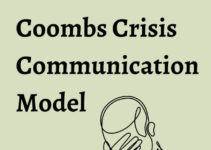Disaster communication is a documented method and process of communicating and sharing information during a crisis. The objective is to provide the correct and timely information to the media and public during crisis and emergency situations. Today, we’ll discuss disaster communication strategy; key benefits, objectives, and steps involved in building the disaster management communication plan.
Benefits of Disaster Communication
- Providing factual information to the public about the crisis
- Managing the hazardous misinformation that is misguiding people
- Promoting trusting open communication
- A proactive communication apporach ensures that it reaches the right audience
- Clarify objectives, strategies, and process of sharing the information to the public
Objectives of Disaster Communication
- Setting up a collaboration and coordinated various media channels
- Approaching credible and authentic messengers
- Promoting open and transparent communication among vulnerable groups and teams
- Managing and normalizing the scientifically uncertain situation
- Dealing with misinformation and disinformation quickly
- Empathic communication approach by showing concern and compassion
- Empowering and motivating people to take actionable steps
- Using multiple media channels to approach the target audience
- Clarifying roles and responsibilities of communicating the right message and effectively responding to criticism from the public and media
Steps of Disaster Communication Strategy
Some of the main steps involved in the disaster communication strategy are as follows;
Expecting Possible Disaster
It is nearly impossible for businesses and companies to precisely predict the exact time of the disaster. However, disaster experts could predict the possible disaster scenarios and their impacts based on previous disastrous experiences.
However, disaster officials and experts should conduct a risk analysis; and employ quantitative and qualitative information to be aware of the nature and intensity of the possible disasters. They could do this by analyzing various conditions, terms, and risk factors; and their impact on the disaster. The disaster officials and experts develop a communication plan based on the risk analysis and various risk scenarios.
Allocating Disaster Team
In order to ensure the effectiveness of the disaster communication strategy, they should allocate a proper team. The disaster team should receive corrective and right information. While organizing the team, it is necessary to select the company’s spokesperson to communicate with the public and media;
- Well-aware of the disaster
- Showing genuine compassion and empathy
- Becoming ready to face any type of questions relevant to disaster
- Having the autonomy to make decisions
Developing a Plan
Disaster officials should develop a comprehensive crisis and disaster communication plan, and collaborate with various team members, local authorities, and emergency responders. The collaborative approach would receive input from all the parties. It comprises of following elements;
- Clarifying roles and responsibilities for all the disaster and crisis team members
- Establishing a proper protocol for communication processes to avoid any type of confusion
- Develop a unified front during the crisis and disaster event
Crafting the Message
The company’s target audience and the stakeholders need the right and accurate information. Fear and trauma would impact the capability of the targeted audience on how to respond to the situation. The communication team should offer clear information and specific guidelines. Some of the key elements of the crisis communication are as follows;
- Avoiding technical jargons
- Communication with the authoritative and empathic tone of voice
- Giving timely updates
- Employing visual aids for clarification like maps, pictures, and diagrams
- Recognizing a proper spokesperson to earn the trust and confidence of customers
- Using simple and easily understandable terms
Recognizing Targeted Audience
The disaster officials and crisis communication team should recognize their targeted audience and develop the plan accordingly. They should make sure that their communication is suitable for different types of audiences. Their targeted audience could be the following;
- Government departments
- Local companies and other corporations
- Local community
- News media outlets
- Survivors of the crisis
The local community comprises a wide range of audience and members and they may not even speak the same language. The crisis and disaster communication team should translate the message into various local and indigenous languages.
Remaining Updated
In order to earn the trust and confidence of the targeted audience, they should communicate regularly and offer timely updates to the disaster team. People and stakeholders want timely and correct information so that they can make timely decisions. They should conduct a press conference and issue the press release on various media channels.
Developing a Communication system for Disaster
The disaster and crisis communication system should be accessible to all the concerned parties and it is the right thing for businesses and companies. Some people are highly active on social media and others are not; they speak different languages and the company should include the voice-to-text option. However, some of the main information channels that people use are as follows;
- Street signage
- Radio broadcasting
- Hotline
- Phone calls
- Text updates
- TV
- Social media
- Online messaging
Conclusion: Disaster Communication Strategy |Disaster Communication Plan | Disaster Management Communication Strategy
After an in-depth study of the disaster communication strategy; we have realized that crisis communication strategy is highly significant. If you are learning about the disaster management communication strategy; then you should keep in mind the abovementioned benefits and the steps involved in building the strategy.
Ahsan is an accomplished researcher and has a deep insight in worldly life affairs. He goes Live 3 days a week on various social media platforms. Other than research writing, he’s a very interesting person.


